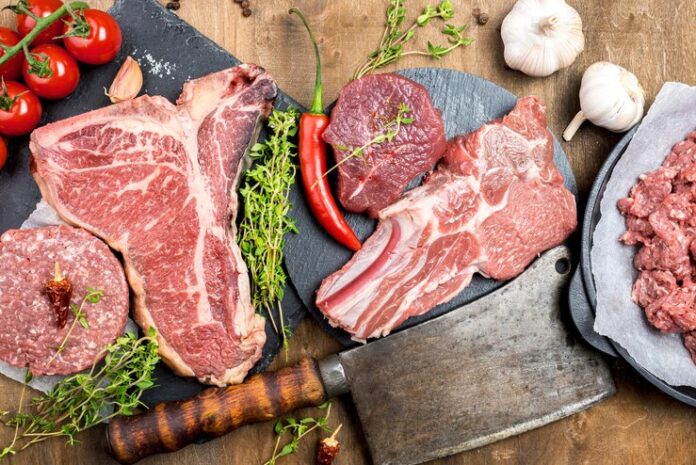Alright, folks, let’s talk about something that’s affecting everyone’s dinner table—meat! Have you noticed fewer steaks at your local grocery or higher prices at your favorite burger joint? You’re not alone. The meat industry in the United States has been wrestling with a big problem: shortages. Let’s dig into what’s going on, why it’s happening, and what today’s scene looks like.
The COVID-19 Challenge
Remember the chaos when the pandemic hit us? The COVID-19 pandemic threw a wrench into pretty much everything, including the meat supply chain. Imagine hundreds of workers at meat plants getting sick. That’s a situation where production lines slowed down dramatically, and processing plants even had to shut their doors sometimes.
So, what does this mean for you and me? Picture this: empty shelves where your favorite cuts of meat used to be. Supermarkets had to limit purchases to make sure there was enough to go around. It’s like the wild days of toilet paper shortages, but with steaks and chicken breasts.
Now, if you thought finding workers was hard before, COVID-19 made it a whole lot worse. Recruiting new people became a nightmare because of health risks, and restrictions on migrant labor only added to the headache. Fast forward to 2024, and we’re still feeling these impacts, trying to play catch-up in a game that’s already tough.
Controversies and Conspiracies
Oh, you thought that was it? Nope! Enter the controversies. Ever hear about the theory that meatpackers were trying to manipulate the market during the pandemic? A 2022 report points fingers at top meat companies allegedly cozying up to the Trump Administration to create a perceived shortage. Yep, it’s as dramatic as it sounds!
Meanwhile, did you know that while we were hunting for bacon strips here at home, pork exports to China were on the rise? Many people were asking, “How’s that fair when we can’t even get enough sausage at breakfast?” It’s a juggling act between keeping domestic shelves stocked and fulfilling international demand, all while trying not to upset the delicate balance of trade policies.
The 2024 Reality Check
Zoom in to today’s scene—or should I say 2024’s reality? Our meat industry, especially beef, is facing some serious bumps in the road. Let’s say you want a juicy hamburger, but here’s the catch: fewer cattle mean fewer burgers. Droughts and high feed costs have taken a bite out of cattle numbers across the U.S.
Then there’s a financial stress storm—increasing feed prices, skyrocketing fuel costs, and pretty much everything else hitting the roof. Add climate change to the mix, and you’ve got grazing lands shrinking and long-term farming becoming less sustainable. It’s like a perfect storm, and we’re all waiting it out.
These hurdles are why beef is pricier and harder to find in 2024. The supply is low, demand is high, and your wallet might feel it more than your stomach these days.
Supply Chain Setbacks
Ah, the logistics nightmare—imagine trying to move a mountain with a teaspoon. Transporting meat involves a warp of refrigeration, timely delivery, and a lot of precise coordination. Throw in the kind of disruptions the pandemic introduced, and well, you’ve got a recipe for disaster.
From trucks stuck in traffic to bottlenecks at distribution centers, these hiccups mean delays and shortages at both local butcher shops and nationwide chains. The perfect ordering system now feels like juggling flaming torches on a tightrope.
Long-term Outlook and Resilience
Are you wondering what the future holds? Spoiler alert: it’s not a quick fix. The meat world is figuring out how to be flexible and strong in the face of these ongoing challenges. Let’s consider using beef as a problem-solving study. We realize the glaring gaps and weaknesses, and reforms might just be our best friends moving forward.
Innovation is knocking on the door with new protein ideas—plant-based options, anyone? Menus are changing, options are diversifying, and both consumers and businesses are getting creative in how they adapt. What we’re seeing is not the end, but a chance to build a more varied and robust food system.
Now, there’s a bigger question for all of us: How can we, as consumers, prepare for and support this new world of food? By keeping an eye on what’s happening and being open to trying new kinds of proteins, for starters.
If you’re curious about how businesses are adapting, check out this source that delves into the evolving nature of the business world: here.
The Big Question
So, what do we do next? How do we ensure that our future food system isn’t just a repeat of current challenges? This is about both the meat industry and us—everyone who enjoys that juicy steak or crispy bacon. Are we ready to shift gears and rethink our expectations?
Let’s accept the change, embrace new foods, and support sustainable practices. By looking at what’s happening now and what needs to happen, we can help shape a smarter, more sustainable food system moving forward. Whether you’re stocking up your fridge or running a restaurant, the goal is to be proactive and prepared, not panicked.
Meat shortages aren’t just about fewer grills sizzling on a summer day. This is about resilience, innovation, and future-proofing our food supply so that we can all enjoy those juicy burgers for years to come!


